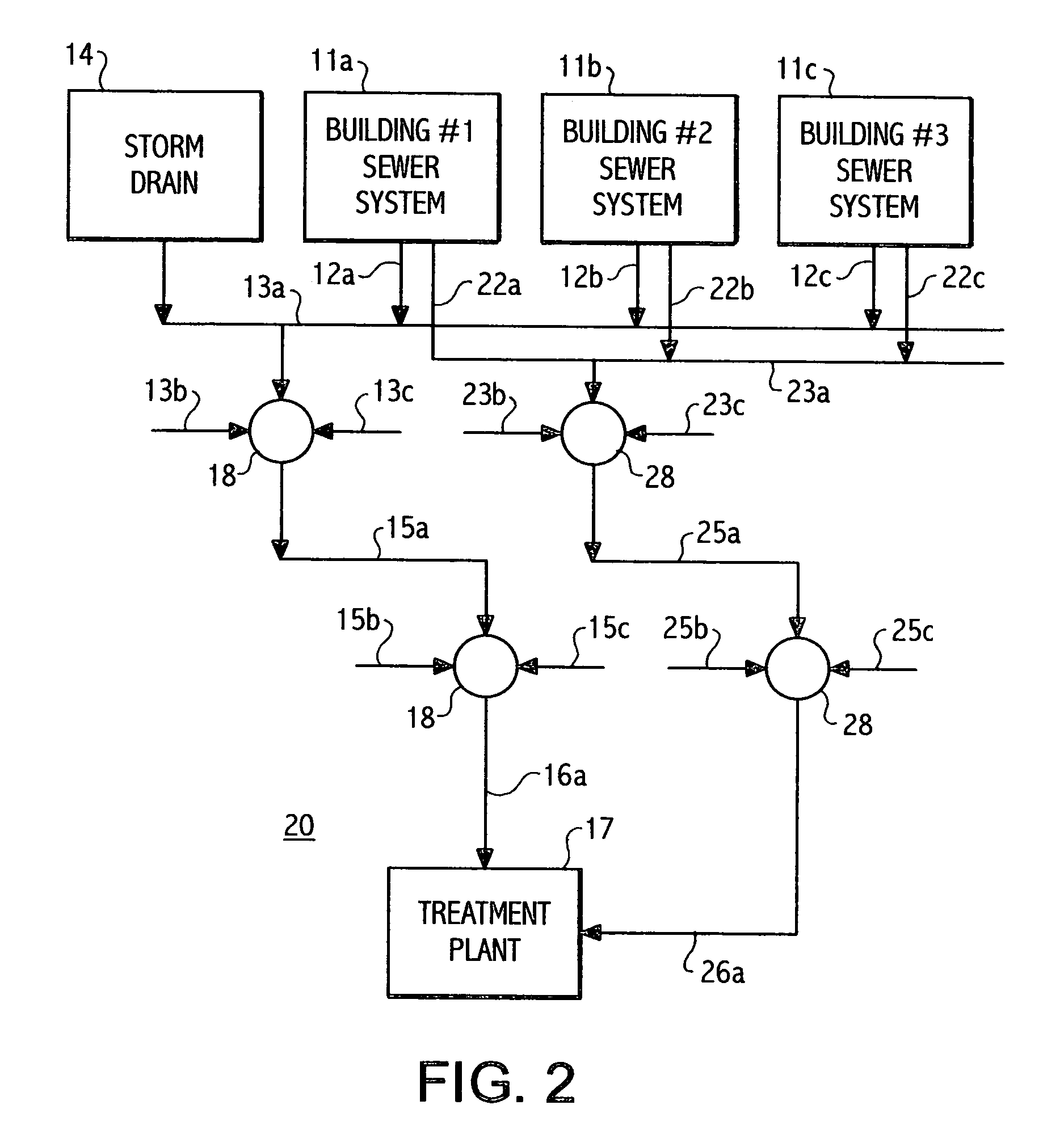Separated sanitary and storm sewer system
a sanitary and storm sewer technology, applied in the direction of sewer pipelines, water supply installation, transportation and packaging, etc., to achieve the effect of reducing the size of the pipe required, increasing the capa plant, and little or no treatmen
- Summary
- Abstract
- Description
- Claims
- Application Information
AI Technical Summary
Benefits of technology
Problems solved by technology
Method used
Image
Examples
first embodiment
[0021]There is shown in FIG. 2 a first embodiment sanitary sewer system 20 according to the present invention wherein the sanitary effluent is completely separated from the remainder of the building wastewater. As also shown in FIG. 1, each of the building sewer systems 11a through 11c is connected by an associated one of the plurality of service lines 12a through 12c respectively to the collector line 13a. Thus, wastewater from such sources as sink drains, tub and shower drains, clothes washer drains and floor drains is combined to flow into the collector line 13a. However, the sanitary effluent from the toilets is connected to each of a plurality of sanitary effluent service lines 22a through 22c to carry the sanitary effluent to a sanitary effluent collector line 23a separate from the original collector line 13a. While new construction can be built with the required separated plumbing, existing building would require conversion. As an alternative, the new service lines 22a throug...
second embodiment
[0025]In some situations, it is desirable not to provide the sanitary effluent service lines 22a through 22c shown in FIG. 2, such as when retrofitting an existing system. There is shown in FIG. 5, a second embodiment sanitary sewer system 30 wherein the service lines 12a through 12c are connected to the sanitary effluent connector line 22a that runs parallel to the collector line 13a. Both of the collector lines 13a and 22a run into a manhole 31 wherein the line 22a can be inserted into the line 13a. From the manhole 31, the sanitary effluent lines run inside the corresponding existing sewer lines as in the system shown in FIG. 2.
[0026]The sewer system according to the present invention can be installed as a complete new system or during the repair of an existing system wherein the existing collector, trunk and interceptor lines are used as a first set of sewer lines that are connected to a source of storm water. The sanitary effluent lines according to the present invention are a ...
PUM
 Login to View More
Login to View More Abstract
Description
Claims
Application Information
 Login to View More
Login to View More - R&D
- Intellectual Property
- Life Sciences
- Materials
- Tech Scout
- Unparalleled Data Quality
- Higher Quality Content
- 60% Fewer Hallucinations
Browse by: Latest US Patents, China's latest patents, Technical Efficacy Thesaurus, Application Domain, Technology Topic, Popular Technical Reports.
© 2025 PatSnap. All rights reserved.Legal|Privacy policy|Modern Slavery Act Transparency Statement|Sitemap|About US| Contact US: help@patsnap.com



